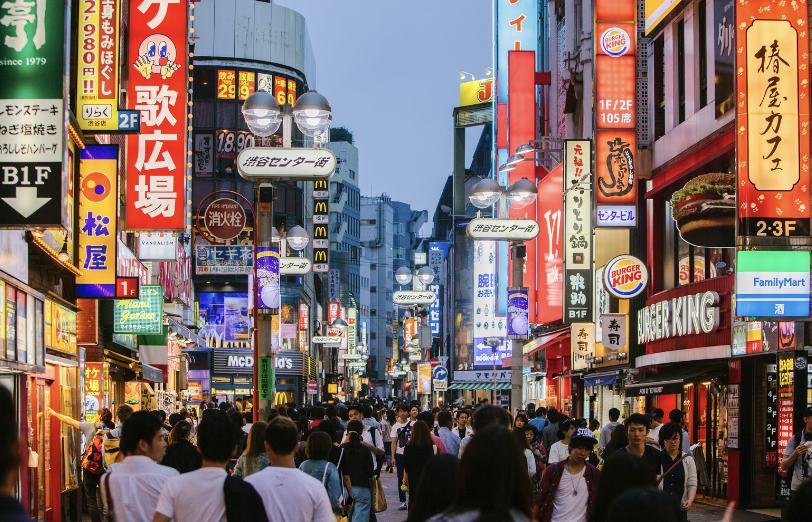
Japan’s 2023 parliamentary session began with an alarming statement from Prime Minister Kishida Fumio, who warned that Japan was on the “brink of social dysfunction” due to the country’s rapidly declining birth rate, population, and labour force. A sense of urgency to address these issues swept across the country, leading the central government to prioritize child-rearing policies and increase efforts to support the equality of women and families. One prefecture even released Japan’s first “declaration of overcoming the population decline crisis.”
These policies reflect Japan’s long-standing pattern of retaining its postwar identity as an ethnically and culturally homogenous nation. From the late Prime Minister Abe Shinzo’s “Womenomics” to Kishida’s “New Capitalism,” policies directed at mitigating population decline have focused on harnessing the country’s existing underutilized populations — including women, youth, and older adults — and new technologies. However, Japan’s population decline and other demographic challenges cannot be addressed solely by insular social policies and robotic interventions. Is immigration a possible solution?
Currently, Japan lacks a holistic system for immigration and has historically opted to introduce piecemeal migration policies to temporarily fill gaps in the labour market. In contrast to Canada’s unified and coherent immigration system, Japan’s official immigration policies are limited to high-income earners and supplemented by ‘side door’ migration policies for lower-skilled, short-term labour. And while Japan’s Ministry of Justice has long been responsible for official immigration, the direction of migration policies is often influenced by multiple government ministries, agencies, and businesses.

Some pundits present mass immigration as an eleventh-hour solution to Japan’s shrinking labour force, aging population, and declining domestic consumption. It is also suggested that Japan could emulate successful immigration-dependent countries, like Canada, by targeting a yearly influx of one million immigrants to counteract population decline. Japan’s expanding attention to migration-related policies indicates a definitive nod towards recognizing the country’s growing need for long-term foreign labour. Still, questions remain regarding the structural and cultural feasibility of integrating and retaining the extraordinary number of migrants necessary to maintain Japan’s labour market stability.
Japan’s population peaked in 2010 at 128.1 million. By 2022, the population had declined to 125.7 million and is projected to fall to 119.1 million by 2030 and 87 million by 2070. Japan’s society is also the oldest in the world, with 28.7 per cent of the population above the age of 64. That number is projected to rise to 38.7 per cent by 2070. At the same time, the country’s birth rate reached an all-time low in 2022, with a fertility rate of 1.26, and only 770,747 births in 2022, the first time this figure has fallen below 800,000 since 1899. While the foreign resident population accounted for a record high of three million people in 2022, the growth has been gradual, only accounting for 2.4 per cent of the total population last year.
These demographic trends are straining the country’s labour force, which has been shrinking since 1993, when its working-age population peaked at 87 million people. By 2040, there will be an anticipated labour shortage of 11 million workers. To offset this gap, Japan would need 647,000 working-age immigrants per year – an incredibly high number. But there were only 115,000 new migrants in 2018, 138,000 in 2019, and 85,000 in 2020, with a slight uptick anticipated post-COVID-19.

In comparison, Canada, which has a comparatively long-standing and highly developed system for attracting and integrating immigrants, recorded 8.3 million former and current permanent residents in 2021, accounting for approximately 23 per cent of the total population. In 2022, Canada welcomed a record 437,000 permanent residents and aims to increase that figure to 500,000 by 2025. In addition, there are 808,000 people in Canada with valid study permits, 551,000 of whom received a study permit in 2022. These figures are some of the highest in the world but are, in fact, lower than the numbers Japan would need to maintain its population. With its unique socio-cultural dynamics, the ingrained idea of homogeneity, and political push-back, it is unlikely that Japan would ever adopt a Canadian-style immigration system or match these intake numbers.
Still, it is undeniable that Japan’s foreign population has been rising. Mainly living in the country’s urban areas, they are increasingly becoming a common sight in smaller Japanese cities, towns, and villages. From international students and technical interns to more specialized and high-skilled labourers, Japan’s foreign resident population reached 3.1 million in 2022. By nationality, more than half of the foreign residents in Japan come from China, Vietnam, and South Korea, with significant increases observed in visa categories for technical interns and students.
Foreign residents, even those who are born or whose families have lived in Japan for generations, are often viewed as temporary visitors to what is perceived as an extremely ‘homogeneous’ Japan. But the rapidly declining population is forcing the country to confront the contradictory relationship between the rigid ‘Japanese’ identity and accepting more migrants, who are rising in number and an increasingly essential component of Japan’s working population.
Read the full report from the Asia Pacific Foundation of Canada here
